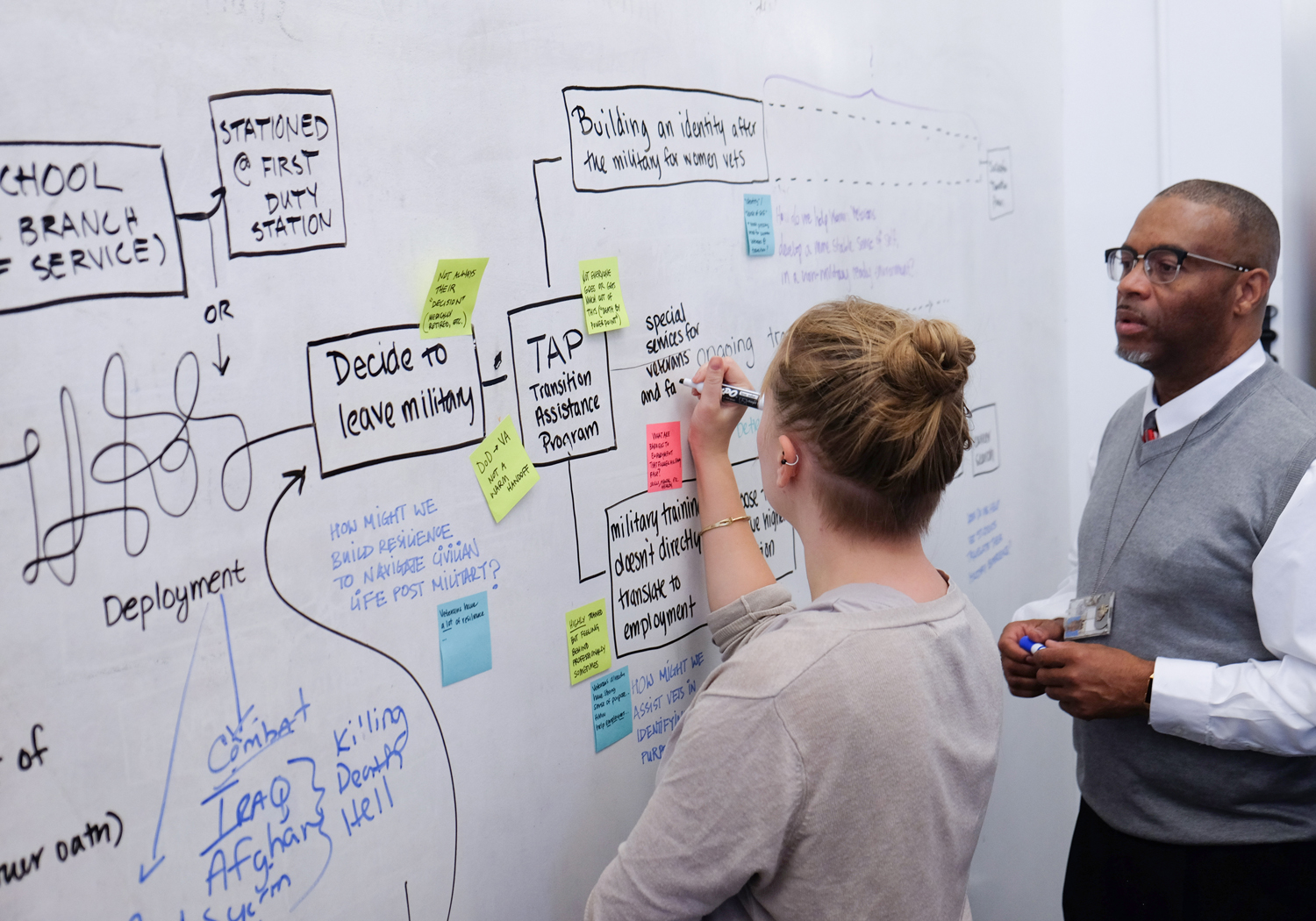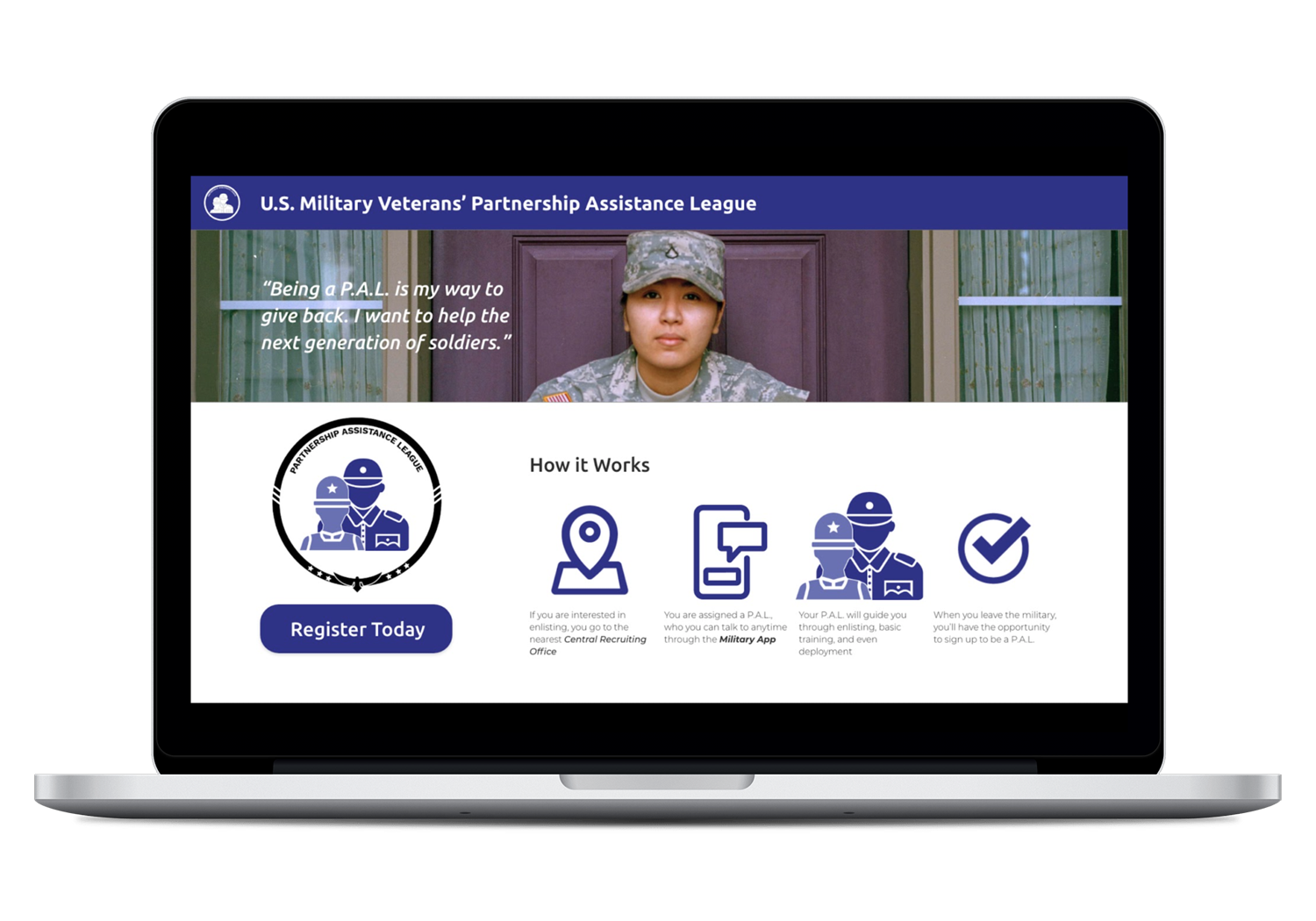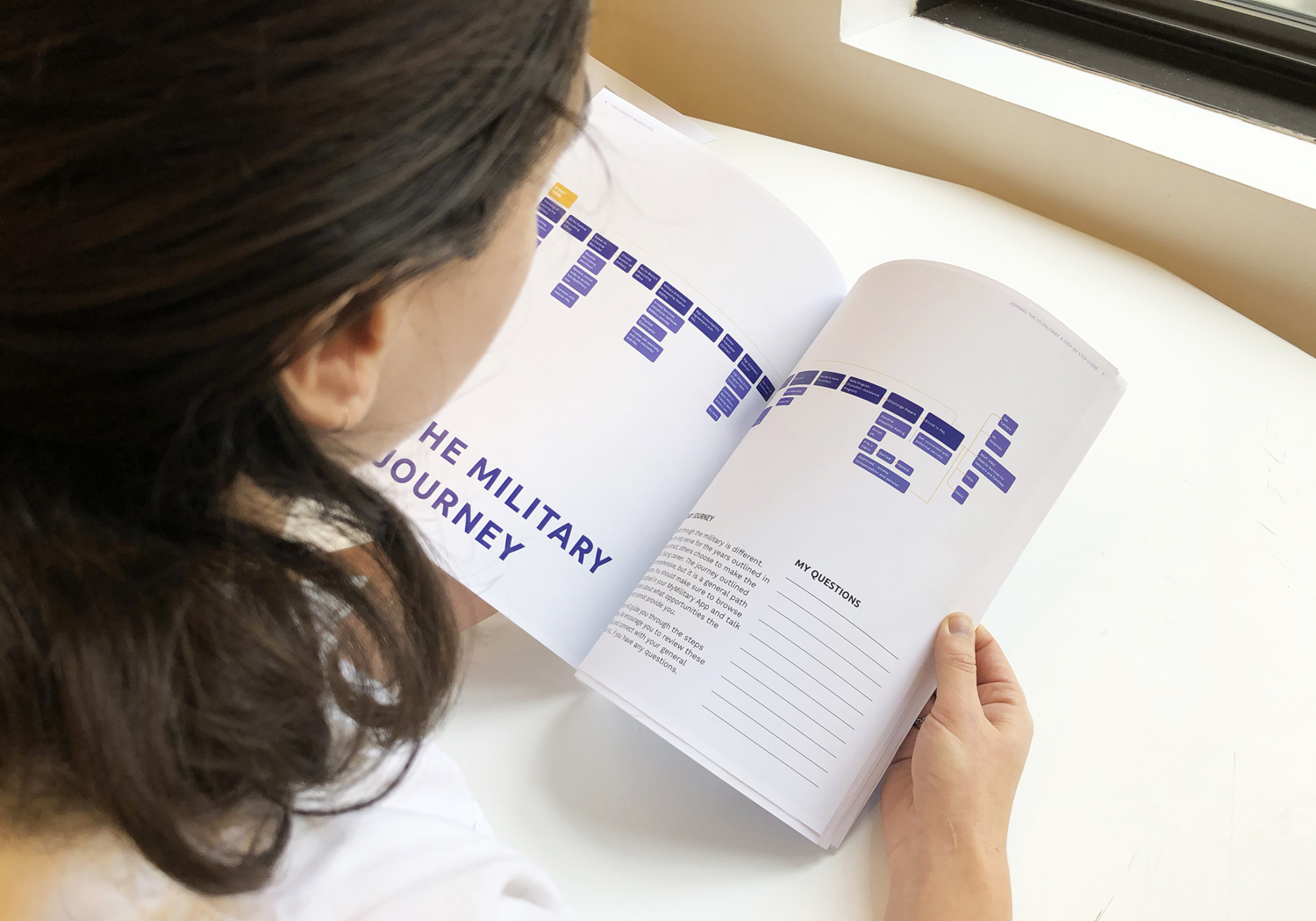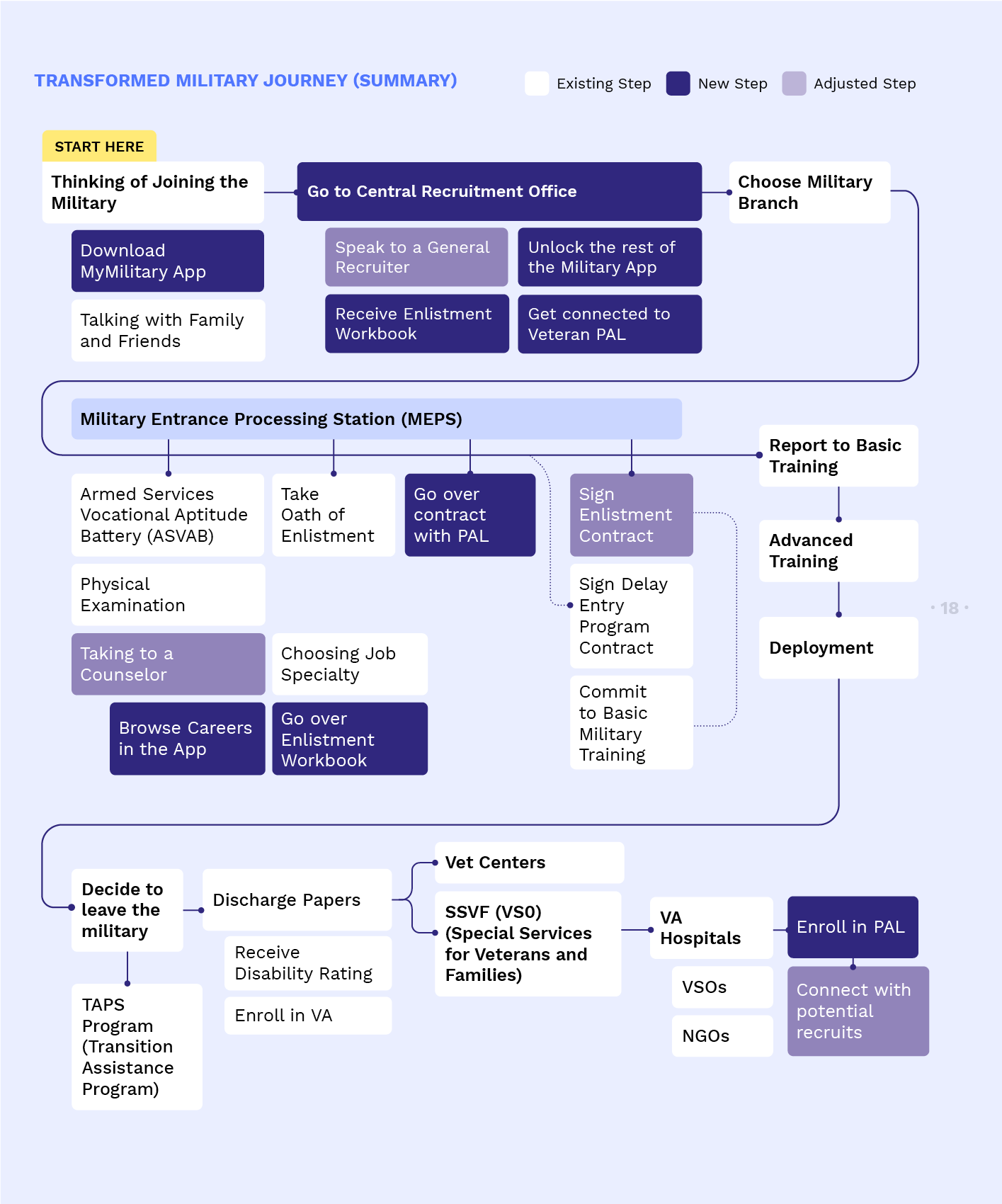1—Central Recruitment Office. Currently each branch has its own separate office. We propose a first central office that can walk a recruit through what each branch offers, what careers are available, and what the interested recruit might be best suited for. At this place, the recruit will also be connected to the rest of the suite:
2—Veteran PAL, or Partnership Assistance League is an NGO that connects veterans with potential recruits. The recruit can ask the veteran about their experiences, benefits, transition to civilian life, experience during active duty and deployment, etc.
It will also allow veterans to continue to be of service, which is an important aspect of successful veteran transition.
3—Enlistment Workbook. Helps guide the recruit through enlistment. It also serves as a centralized source of information and visualization of the entire process, with helpful tips and resources along the way to ensure that the recruit knows what questions to ask and what provisions to ensure as part of their enlistment.
4 · 5—The workbook features a Community Agreement between PAL and the recruit, plus a Translated Contract in everyday language that explains the details and obligations outlined in the military enlistment contract. With this workbook and contract, a prospective recruit can go through their enlistment journey fully understanding what is expected of them, and what they can expect.
6—MyMilitary App. It allows anyone to browse available careers and enlistment steps. Once a prospective recruit goes to a Central Recruitment Office, they receive their recruit code, which unlocks the rest of the app. The DoD updates each step as the recruit completes them so the recruit can see their progress and what obligations they have yet to meet.
“Go into it fully educated. Research and ask questions. Also understand that what you are about to do will change you in some shape or form forever. What you do with that change is up to you” —Raymond Holt US Military Veteran




